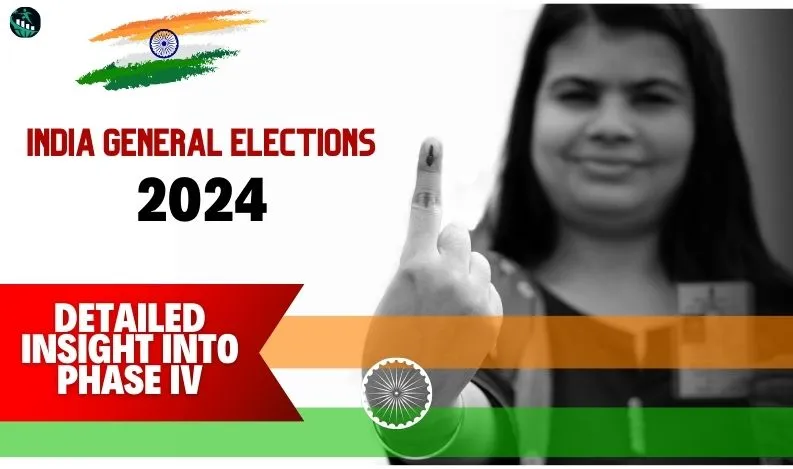
India General Elections 2024: Detailed Insight into Phase IV
The fourth phase of the 2024 Lok Sabha elections, held on May 13, was a pivotal moment in the seven-phase election process. As the largest democracy in the world, India's electoral events are complex and involve the coordination of millions of people across a vast geographic area. This phase covered 96 constituencies across 10 States and union territories, engaging a diverse electorate with varying local issues and political dynamics.
Voter Turnout and Electoral Dynamics
Overall Turnout: The voter turnout was recorded at 64.60% by the closing of the polls at 11 p.m. This phase saw 1,717 candidates contest for the votes of approximately 17.7 crore eligible electors, reflecting the democratic spirit of the nation.
State-wise Highlights:
• West Bengal: This state witnessed the highest turnout at 76.89%. The day was marked by intense competition and some clashes between the Trinamool Congress (TMC) and Bharatiya Janata Party (BJP), particularly in areas like Birbhum and Bardhaman-Durgapur. These incidents underscore the high stakes involved in the region's political battles.
• Srinagar: Achieving a turnout of 38%, the highest in many decades for this constituency, Srinagar's participation is significant as it reflects a shift towards normalcy and greater electoral participation following the abrogation of Article 370.
• Maharashtra, Andhra Pradesh, and Telangana: Each state showed different levels of voter engagement. Maharashtra recorded a lower turnout at 59.33%, possibly due to voter fatigue or local discontents. Andhra Pradesh and Telangana had turnouts of 68.87% and 62.64%, respectively, indicating vigorous electoral participation driven by regional issues and party campaigns.
Incidents of Violence and Technical Issues
EVM Malfunctions: The phase was not without technical hitches, as several states reported malfunctions with Electronic Voting Machines (EVMs). These incidents pose questions about the technological robustness needed to conduct flawless elections.
Violence and Allegations:
• Telangana: Controversy surrounded a BJP candidate who was accused of instructing women voters to reveal their faces for identity checks, leading to a formal case being registered.
•Andhra Pradesh: The political rivalry intensified with accusations flying between the TDP and YSRCP, leading to reports of electoral violence in regions such as Palnadu and Kadapa. Such incidents reflect the intense competition and high tensions characteristic of elections in the state.
Key Electoral Battles
High-Profile Contests:
•Krishnagar: This constituency saw a strategic battle between TMC’s Mahua Moitra and BJP’s Amrita Roy, making it one of the most closely watched contests. The outcome here could influence regional political dynamics significantly.
•Baharampur: A traditional stronghold of the Congress, represented by Adhir Ranjan Chowdhury, faced a stiff challenge from TMC’s newcomer Yusuf Pathan. The contest here symbolizes the broader national struggle between the Congress and regional parties like the TMC.
Political Implications and Future Outlook
With the completion of this phase, the groundwork is laid for the upcoming final phases. The political outcomes of these contests are crucial as they will determine the composition of the next Lok Sabha and subsequently, the government. The remaining phases are expected to be equally contentious, with parties vying to consolidate or expand their influence.
Conclusion
The fourth phase of the Lok Sabha elections underscores the challenges and vibrancy of Indian democracy. From technical issues to instances of violence, the path to democratic expression is fraught with difficulties, yet the enduring spirit of the electorate continues to shine through. The world watches as India shapes its future through these critical electoral processes.
Also Read:-



Recent Comments: